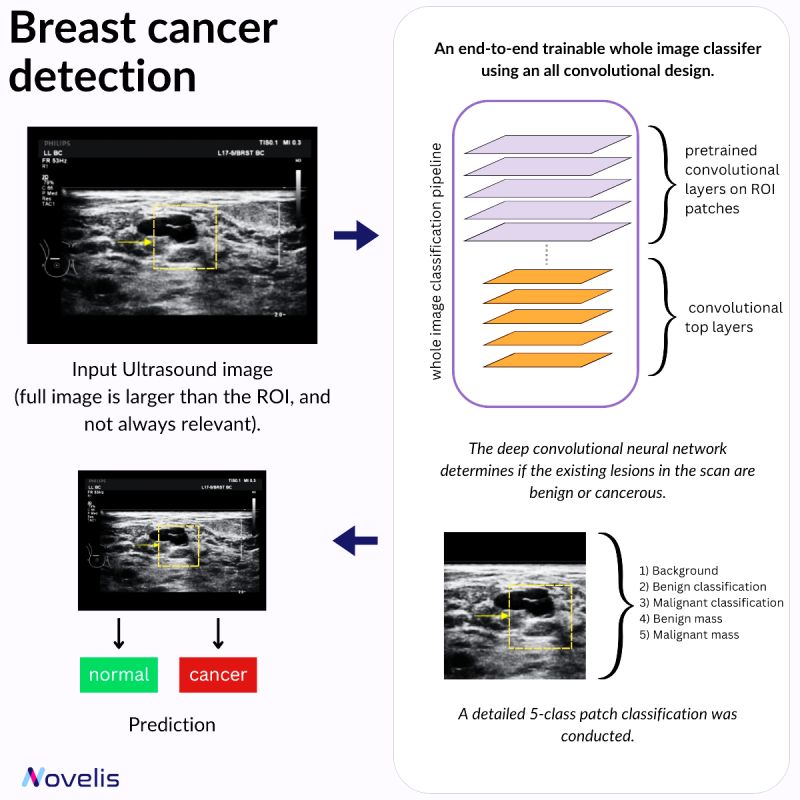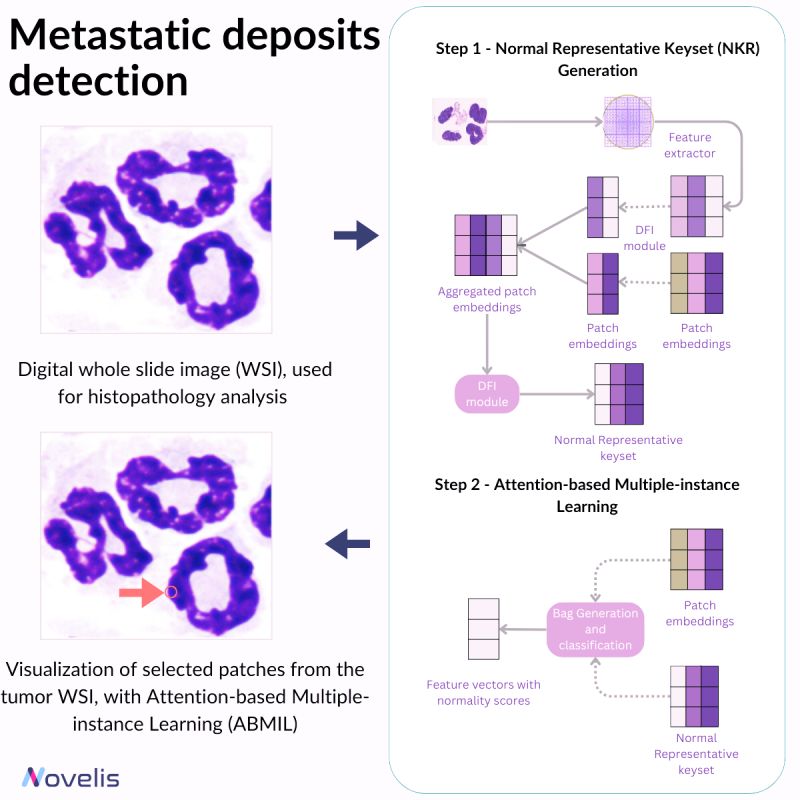December digest – Summary of our Novelis Research posts on the different ways AI can be used in healthcare
04/01/2024
Jan 4 , 2024 read
At Novelis, we are committed to using new technologies as tools to better respond to our customers' operational challenges and thus better support them in their transformation. That's why we have an ambitious R&D laboratory, with substantial investments: 26% of revenues are invested in research.
To keep you up to date with the latest scientific news, we've created a LinkedIn page dedicated to our Lab, called Novelis Research, check it out!
Let's recap all the Novelis Research articles from December. This month, our team had the pleasure of sharing with you the latest news on the various existing uses of AI in healthcare. Here are the articles we shared with you:
🔎Deep Learning to Improve Breast Cancer Detection on Screening Mammography🩺

Our focus this month is on how AI can be used in healthcare. This post will present a paper titled "Deep Learning to Improve Breast Cancer Detection on Screening Mammography" that covers an innovative deep-learning approach that aims to enhance breast cancer detection in screening mammography. A full-field digital mammography (FFDM) image typically has a resolution of 4000 x 3000 pixels, while a potentially cancerous region of interest (ROI) can be as small as 100 × 100 pixels. The method leverages these clinical ROI annotations to refine mammogram classification, which holds promise for significantly improving screening accuracy.
The technology utilizes an "end-to-end" training approach. It is trained on local image patches with detailed annotations and then adapts to whole images, requiring only image-level labels. This approach reduces dependence on detailed annotations, making it more versatile and scalable across various mammography databases.
🎯Why is this essential? 🎯 This paper is significant due to its potential to improve the accuracy of breast cancer detection in mammograms. It offers a more generalizable and scalable solution compared to traditional methods, reducing the risk of false positives and negatives. This approach could play a crucial role in early breast cancer detection and, therefore, help save lives by identifying cancer at more treatable stages.
🤖 Revolutionizing Cancer Diagnosis: The Vital Role of AI in Early Detection🩺

Recent advancements in AI have significantly contributed to cancer research, particularly in analyzing histopathological imaging data. This reduces the need for extensive human intervention. In breast cancer, early detection of lymph node metastasis holds paramount importance, especially in the case of smaller tumors. Early diagnosis plays a crucial role in determining the treatment outcome. Pathologists often face difficulties in identifying tiny or subtle metastatic deposits, which leads to greater reliance on cytokeratin stains for improved detection. However, this method has inherent limitations and can be improved upon. This is where deep learning comes in as a vital alternative to address the intricacies of detecting small tumors early.
A notable approach within deep learning is the normal representative keyset attention-based multiple-instance learning (NRK-ABMIL). This technique consists of fine-tuning the attention mechanism to prioritize the detection of lesions. To achieve it, NRK-ABMIL establishes an optimal keyset of normal patch embeddings, referred to as the normal representative keyset.
🎯Why is this essential?🎯
It is important to continue the research in whole slide images (WSIs) methods, with a particular emphasis on enhancing the detection of small lesions more precisely and accurately. This pursuit is crucial because advancing our understanding and refinement of WSIs can significantly impact early diagnosis and treatment efficacy.
Stay tuned for more exciting insights in the coming month!
